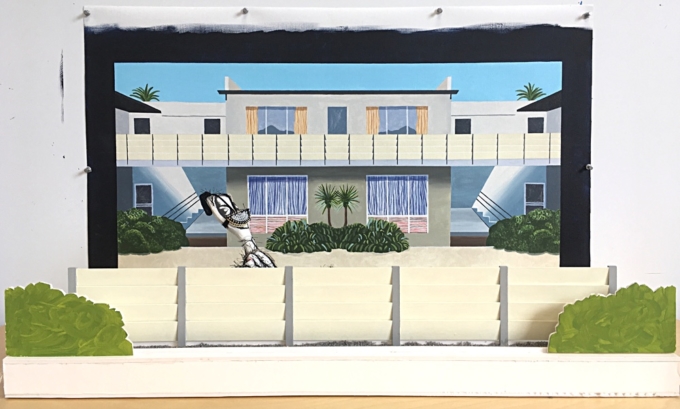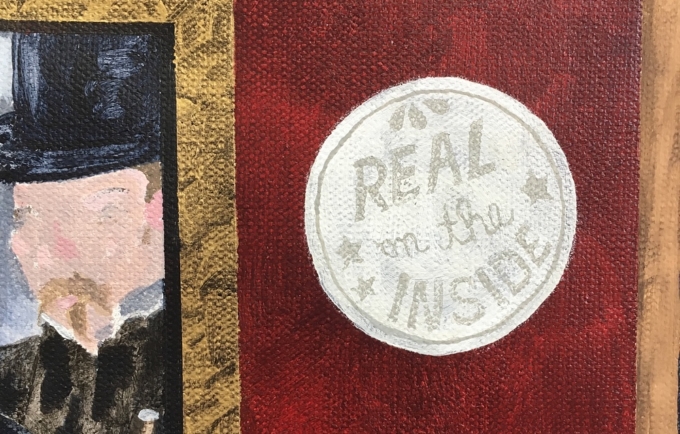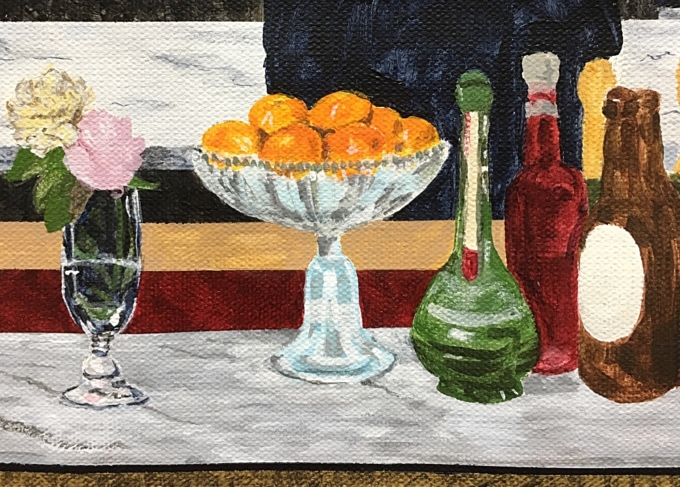Freaks, Geeks, and Strange Girls
I have a confession.
I’ve been using my ramped up studio hours as an excuse to let the admin side of my practice slide. It’s reasonable considering I’m on a very tight production deadline, but I also know when I’m starting to use studio time to avoid other tasks.
The time is drawing near for me to put pen to paper (fingers to keyboard) and work out word-wise what the current series is about; soon the gallery will need to have images and a statement for promotional purposes on their website. I’ve had this task on my to-do list for two months. Not surprising, my studio production in the last two months has been AHHH-MAZING.
So, because I haven’t written a blog post in a while, and because I love me some efficiency, I thought I’d combine tasks and write down some thoughts about the One of Us series and share them in an article here.

I’ve always had an interest in things that don’t fit the status quo, are outside the box, or considered strange. In 2011 I started thinking about creating a series of characters inspired by the circus. I began collecting books and watching documentaries and films featuring the circus and freak shows.
The freak show’s foundation of fact merged with fiction intrigues me. I have a long-standing fascination with the push and pull between real/not real, genuine vs. artificial, and objects and individuals that – whether through masquerade, posturing or camouflage – are not quite what they seem.
I view the iconic, unconventional bodies found in sideshows as archetypes that conventional-bodied people can relate to – not so much on a physiological level but on a psychic level. Everyone has felt different and like an outsider at some point in their existence. We all know what it feels like to “not fit in”.
This series highlights the struggle between wanting to fit in but not wanting to fit in too much. The characters I’m exploring are complex identities that exist in the space between the desire to fit in and the desire to stand out. The dioramas I’ve created capture the figures at a specific moment in their desire. In many cases this desire seems conflicted.
Contradictory clues muddy intentions. Figures that appear to want to blend into their environments are physically barricaded, enclosed, or otherwise separated from the viewer, unable to fully integrate. Characters that appear to want to stand out come across as unsure of their intentions.

The recurring text “Real on the Inside” is a statement appropriated from vintage sideshow banners which promised truth to the outlandish visions depicted in the painted scenes if only the viewer would buy into it, paying admission to access the interior tent show. In this series the statement is found in various guises throughout: a mirrored wall plaque, a magazine publication, and retail store signage. Especially poignant with doll-like figures in the starring roles, the text, “Real on the Inside” has an additional Pinocchio-esque meaning – the desire to be seen as real, genuine, valid.
In each diorama materials that that are not meant to be a permanent fix acknowledge the temporary nature of a traditional traveling circus and sideshow: clothespins secure an ad-hoc theatrical curtain, straight pins secure strips of “grass” in an unusual garden, interim painters’ tape as a stand in for pool tiles. In many cases, viewing pieces from the side or back reveals elements that have been purposely left in an unfinished state, reinforcing the concept of superficial surface over substance.
Peppered liberally throughout the works are references to contemporary culture (IKEA, kombucha bars, a well-known lingerie chain). Bonus references for those in the know (and tasty tidbits of information for unknowing viewers to discover) incorporate appropriated and manipulated imagery of well-known artists such as Hockney, Manet, Degas and the Guerilla Girls. These serve as homages to a few of my art heroes (and, um, well, maybe an affectionate dig to Koons and Warhol 😉 )

The figures, placed in environments that either diminished or highlight their difference, allow viewers the opportunity to empathize with the experience of feeling different and wanting to fit in (and conversely, feeling different and desiring to express that difference and stand out).
Piecing together the intensely layered elements of each diorama will, when read collectively, deliver a deeper understanding of each character’s ultimate desires.
NB – The title of this post comes from my most cherished resource book of the same name, Freaks, Geeks & Strange Girls: Sideshow Banners of the Great American Miday (Randy Johnson, Jim Secreto, Teddy Varndell).
Phew! That feels like a decent beginning – many more drafts to come, I’m sure 🙂 . If there’s anything regarding the series that you’re curious about that I didn’t cover, or if you have a specific question, please let me know!